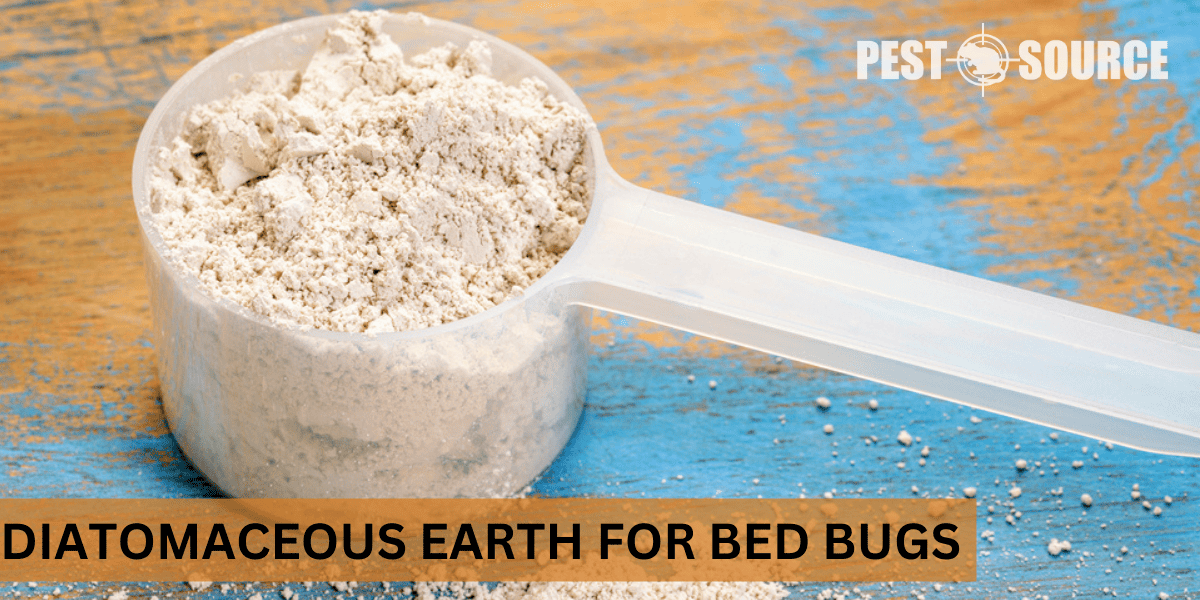Diatomaceous earth can kill bed bugs by dehydrating them through the absorption of oils and fats from their exoskeletons. It’s a natural, non-toxic powder that’s often used in pest control. Read on to learn about the proper application of diatomaceous earth and its effectiveness as part of a bed bug eradication strategy.
POINTS
- Diatomaceous earth, a natural, non-toxic substance, is effective in killing bed bugs by causing dehydration through contact. However, it’s not an immediate solution, and it might take several days or weeks to exterminate the pests completely.
- While diatomaceous earth is an effective bed bug killer, it does not affect bed bug eggs due to their protective coating. Therefore, it should not be considered a standalone solution for bed bug infests.
- For household use, it is safer to use food-grade diatomaceous earth over pool-grade, due to the absence of harmful additional chemicals. Applying it requires safety precautions, such as wearing a mask and gloves, to avoid potential harm from inhaling or contacting the fine particles.
- Though beneficial, applying diatomaceous earth can be messy and requires reapplication every few weeks. It’s also rendered ineffective in damp environments.
- While a potent tool, to control a broader bed bug infestation effectively, diatomaceous earth should be used as part of a comprehensive bed bug control plan, which could involve other natural substances, cleaning, heat treatments, and professional pest control services.
Diatomaceous Earth and Bed Bugs
What is diatomaceous earth?
Diatomaceous earth is a natural substance made of fossilized remains of microscopic aquatic organisms, called diatoms. Their skeletons are made of a natural material called silica, which is safe for humans and pets- but lethal for pests like bed bugs.
How does diatomaceous earth kill bed bugs?
Diatomaceous earth kills bed bugs by cutting their exoskeletons as they crawl over it, causing them to gradually lose their body fluids and die of dehydration over time. This method of pest control is not immediate- it requires the bed bugs to come into direct contact with the substance.
How effective is diatomaceous earth against bed bugs?
Diatomaceous earth has proven to be quite effective in killing bed bugs. Yet, it’s critical to note it’s not an instant solution and requires several days to take effect. However, its non-toxicity makes it an excellent choice for people preferring natural pest control methods.
How does diatomaceous earth work against bed bugs?
How long does diatomaceous earth take to kill bed bugs?
Diatomaceous earth is not a quick fix and may take a few days or even weeks to fully eliminate bed bugs. Given that bed bugs must come into contact with the powder, it depends on how quickly that can happen.
Can diatomaceous earth kill bed bug eggs?
Unfortunately, diatomaceous earth isn’t effective against bed bugs in egg form. This is because bed bug eggs are coated with a protective layer that shields them from harmful substances.
What makes diatomaceous earth effective as a bed bug killer?
The reason diatomaceous earth is an effective killer of bed bugs lies in its microscopic structure. Its sharp-ended particles penetrate the bed bug’s exoskeleton upon contact, leading to gradual dehydration and eventual death.
How to use diatomaceous earth for bed bug control?
How to apply diatomaceous earth for bed bugs?
To effectively use diatomaceous earth against bed bugs, you’ll want to apply it in a thin layer in the places where bed bugs are most likely to appear: near beds, within cracks and crevices, and behind furniture.
Can diatomaceous earth be applied on beds and couches?
Yes, diatomaceous earth can safely be applied to beds, couches, and other furniture where bed bugs might reside. However, it’s best to apply a thin, nearly invisible layer, as bed bugs might avoid large, visible piles of the substance.
How to use diatomaceous earth spray for bed bugs?
Diatomaceous earth also comes in a spray form that makes it easier to apply. To use, lightly shake the spray bottle to mix the remaining sediment, and proceed to spray along baseboards, bed frames, doorways, and other areas where bed bugs tend to hide. Remember always to shake the bottle before each spray to keep the sediment from settling.
How often should diatomaceous earth be reapplied for effective bed bug control?
Keep in mind that diatomaceous earth requires regular reapplication to maintain its effectiveness. A good rule of thumb is to reapply the substance every few weeks, especially in high-traffic areas that might cause the powder to scatter.
Choosing the right kind of diatomaceous earth for bed bugs
What type of diatomaceous earth kills bed bugs?
For effective results against bed bugs, it is recommended to use food-grade diatomaceous earth. The reason is that it’s a more refined grade, safe for humans and pets alike.
What are the differences between food-grade diatomaceous earth and pool-grade diatomaceous earth?
Food-grade diatomaceous earth and pool-grade diatomaceous earth differ mainly in their compositions. While they are both silica-based, pool-grade diatomaceous earth often contains other chemicals which make it hazardous to humans and pets.
Food-grade diatomaceous earth is more refined and doesn’t contain these harmful substances, making it the preferred choice for use in households.
What are the safety considerations when choosing diatomaceous earth?
When using diatomaceous earth to control bed bugs, essential safety measures must be taken. Always use food-grade product and remember to wear gloves and a mask, as the fine particles can be harmful if inhaled. Moreover, keep the substance out of the reach of children and pets, as ingesting large amounts can have adverse effects.
Diatomaceous earth vs. other powders for bed bug control
How does diatomaceous earth compare to other powders that kill bed bugs?
Diatomaceous earth stands out amongst other powders for bed bug control due to its safety and efficacy. Unlike some other powders, it is non-toxic and generally safe for household use around humans and pets.
Does bed bug powder work as effectively as diatomaceous earth?
Bed bug powders can be effective, but their efficiency hinges heavily on their ingredients. Some powders contain pesticides and other stronger substances, which may kill bed bugs faster but could also pose health risks to humans and pets. As a result, diatomaceous earth often remains a popular choice due to its high safety profile.
What types of powders are effective in killing bed bugs?
Various kinds of powders such as pyrethroid-based powders, silica gel, and boric acid powder can be effective against bed bugs. However, each type of powder comes with its safety considerations and potential risks, making diatomaceous earth a favorable choice given its non-toxic nature.
Are there alternative substances to diatomaceous earth for bed bug control?
Yes, there are alternative substances like neem oil, tea tree oil, vinegar, and essential oils that can be used to control bed bugs. However, their effectiveness may vary and could be less consistent compared to diatomaceous earth.
Potential drawbacks and precautions when using diatomaceous earth for bed bugs
What are the possible risks to pets and small animals?
While diatomaceous earth is non-toxic, it can irritate the mucous membranes of some pets and small animals if ingested or inhaled. Therefore, keep your pets away during application and make sure the dust has settled before allowing them back into the area.
How messy can the application of diatomaceous earth be?
Applying diatomaceous earth can be messy due to the fine dust-like texture of the powder. Hence, it’s important to apply it carefully and evenly, focusing on thin layers rather than large piles. Cleaning up after application can also be somewhat tedious, requiring a careful vacuuming process to ensure no traces are left.
What precautions should one take when applying diatomaceous earth?
The number one precaution to keep in mind is to avoid inhalation of diatomaceous earth. Always wear a mask while applying it. Moreover, use gloves during application to avoid skin irritation, and keep children and pets away during the process until the dust has completely settled.
Are there situations where diatomaceous earth is not effective in killing bed bugs?
Yes. Diatomaceous earth is not effective in damp environments as this prevents the powder from sticking to the bed bugs’ exoskeleton. The dampness can diminish the dehydration effect, rendering the substance less potent.
What chemical kills Bed bugs?
In addition to Diatomaceous Earth, there are other substances that can be used to combat bed bug infestations. It is important to understand the variety of options available for homeowners seeking to eradicate these pests from their living spaces. One of the most effective substances is a specific chemical that kills bed bugs. This substance can be utilized in a safe and efficient manner, and is often the preferred choice of many professional exterminators. It’s a good idea to familiarize yourself with all the possibilities to make the best decision for your situation.



